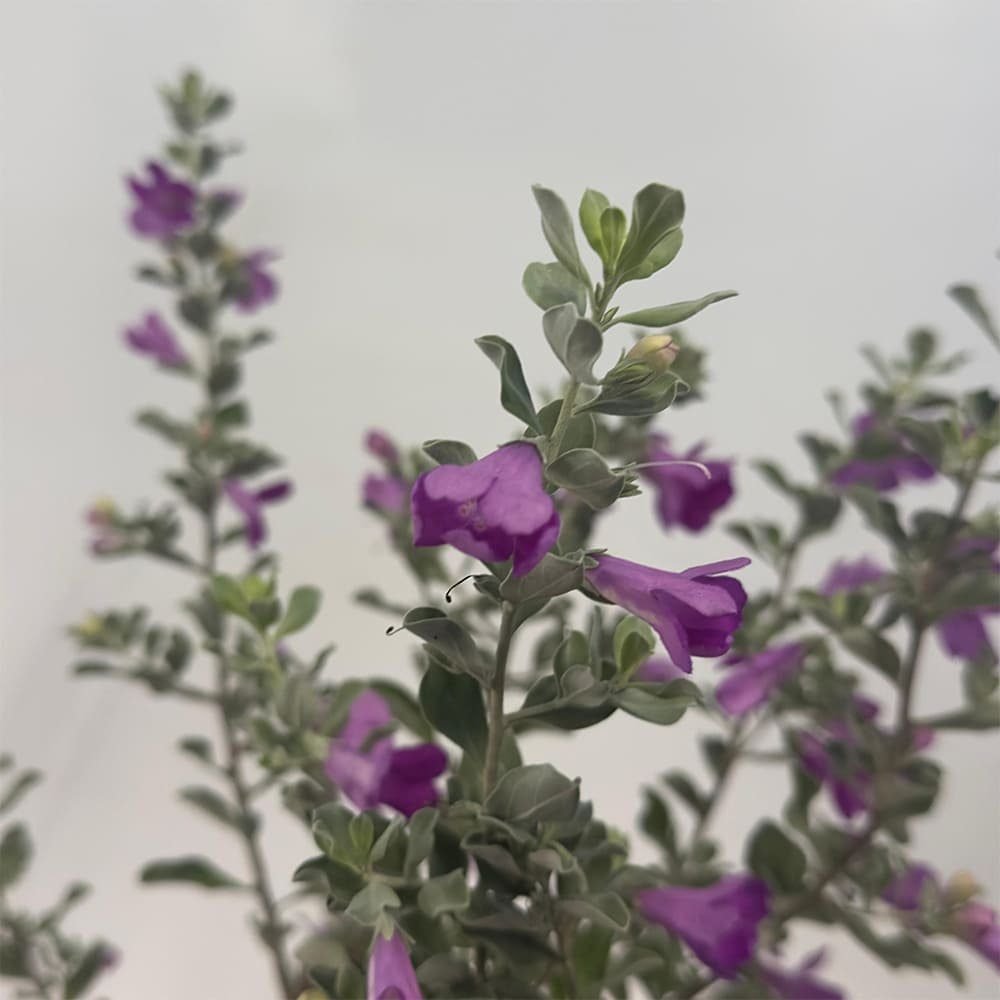No products in the cart.
Texas Sage
RM16.00
Texas Sage, also known as Silverleaf or Barometer Bush, is a hardy ornamental shrub with silvery-green foliage and vibrant purple flowers. Known for its drought tolerance and minimal maintenance needs, this plant is a perfect choice for gardens, landscapes, or decorative hedges.
Plant Handling Guide
We take great care in selecting and packing each plant to ensure it arrives healthy and thriving. As living products, plants may experience minor stress during transit, such as slight drooping or imperfections, which typically resolve with proper care. Environmental conditions during delivery, such as temperature and handling, can also affect their appearance.
Please unpack your plant promptly and follow the included care instructions. To help us assist you quickly in case of any issues, we kindly ask that you record a video while unboxing your plant. If your plant arrives in poor condition, contact us within 24 hours of delivery and share the unboxing video along with clear photos. This allows us to better assess the situation and offer support where possible.
Shipping Details
Your delivery options will be calculated at checkout. We ship every day except Sunday. During the peak season, delivery times may require longer lead times than usual. Perfect for bringing warmth and elegance to your home or office.
Product Disclaimer
Despite every effort to provide accurate images of each product’s color and design, actual colors and design may vary slightly, due to different device screen settings, the lighting in the location, slight differences in product finishes over time and other factors.
Advantages of Texas Sage
- Drought-Tolerant: Thrives in arid and dry conditions, requiring minimal watering.
- Attractive Foliage: The silvery-green leaves provide a striking contrast to its colorful blooms.
- Seasonal Flowers: Produces vibrant purple flowers after rainfall, creating a beautiful display.
- Low Maintenance: A hardy plant that requires little care, ideal for busy gardeners.
- Versatile Landscaping Plant: Works well as a hedge, border, or standalone shrub in xeriscaped or traditional gardens.
Care Tips for Your Texas Sage
- Sunlight: Prefers full sun for at least 6 hours daily to thrive and bloom abundantly.
- Watering: Water sparingly; once established, it requires minimal watering and prefers well-drained, dry soil.
- Soil: Grows best in sandy or rocky, well-draining soil. Avoid heavy, waterlogged soil.
- Temperature: Adapted to warm climates, tolerating temperatures from 20–40°C. Frost resistance varies by variety.
- Fertilizer: Rarely requires fertilizer, but a slow-release fertilizer in early spring can encourage growth.
Additional Information
- Pet-Friendly: Generally considered non-toxic, making it safe for households with pets.
- Pruning: Prune after the flowering season to maintain shape and remove any dead or damaged branches.
- Pests: Rarely affected by pests, but aphids or spider mites may appear in extreme conditions. Treat with neem oil or insecticidal soap if necessary.
- Special Feature: Flowers often appear in response to changes in humidity or rainfall, giving it the nickname “Barometer Bush.”
Texas Sage is a low-maintenance, water-wise plant that adds texture, color, and resilience to any landscape, making it a favorite for gardeners in arid or tropical regions alike!
| Weight | 2.7 kg |
|---|---|
| Dimensions | 20 × 20 × 70 cm |






